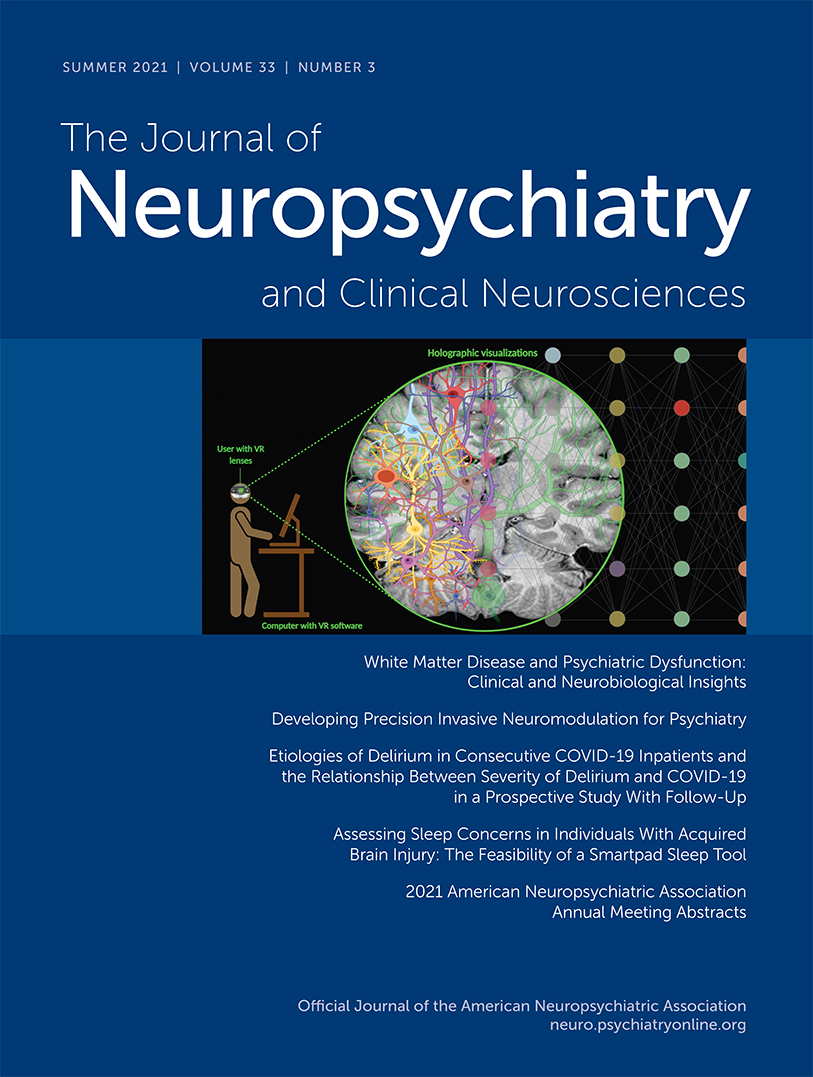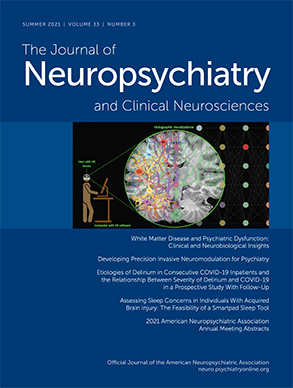Assessing Sleep Concerns in Individuals With Acquired Brain Injury: The Feasibility of a Smartpad Sleep Tool
Abstract
Objective:
Methods:
Results:
Conclusions:
Methods
Study Participants
Customizable Electronic Questionnaire
Statistics
Results
Demographic Characteristics
| Characteristic | N | % |
|---|---|---|
| Age (years) (mean±SD) | 46.3 | 14.8 |
| Male | 39 | 57.4 |
| White | 56 | 82.4 |
| Body mass index (kg/m2) (mean±SD) | 28.7 | 8.3 |
| Married | 21 | 35.0 |
| Education | ||
| GED/high school graduate or less | 24 | 42.4 |
| Some college | 12 | 20.3 |
| College graduate | 14 | 23.7 |
| Professional degree | 9 | 15.3 |
| Household income | ||
| ≤$25,000 | 35 | 61.4 |
| >$25,000–$75,000 | 7 | 12.3 |
| >$75,000–$100,000 | 5 | 8.8 |
| >$100,000 | 10 | 17.5 |
| Occupational status | ||
| Full-time | 11 | 17.7 |
| Part-time | 7 | 11.3 |
| Disability | 29 | 46.8 |
| Retired | 6 | 9.7 |
| Other | 4 | 6.5 |
| Community | ||
| Suburban | 28 | 50.0 |
| Urban | 7 | 12.5 |
| Rural | 19 | 33.9 |
| Other | 2 | 3.6 |
| Acquired brain injury | ||
| Time from first injury (years) (mean±SD) | 13.1 | 12.9 |
| Multiple injuries | 9 | 26.0 |
| Type of brain injury | ||
| Traumatic brain injury | 45 | 69.2 |
| Structural abnormality | 4 | 6.2 |
| Stroke | 5 | 7.7 |
| Seizure | 6 | 9.2 |
| Other | 5 | 7.7 |
| Loss of consciousness | ||
| 0–30 minutes | 25 | 46.3 |
| >30 minutes and <24 hours | 1 | 1.9 |
| >24 hours | 5 | 9.3 |
| Medically induced coma | 5 | 9.3 |
| Unknown | 18 | 33.3 |
Brain Injury
Sleep Disturbance
| Variable | N | % |
|---|---|---|
| Pittsburgh Sleep Quality Index score (mean±SD)a | 9.24 | 4.66 |
| Pittsburgh Sleep Quality Index cutoff scorea | ||
| Good sleep | 10 | 16.1 |
| Poor sleep | 52 | 83.9 |
| Pittsburgh Sleep Quality Index score based on loss of consciousness | ||
| 0–30 minutes (mean±SD) | 11.09 | 3.67 |
| >30 minutes (mean±SD) | 11.17 | 6.46 |
| Unknown (mean±SD) | 9.00 | 4.58 |
| Medically induced coma (mean±SD) | 5.20 | 3.56 |
| Insomnia Severity Index score (mean±SD)b | 11.76 | 7.81 |
| Insomnia Severity Index cutoff scoreb | ||
| No insomnia | 21 | 36.2 |
| Subthreshold insomnia | 11 | 19.0 |
| Moderate clinical insomnia | 19 | 32.8 |
| Severe clinical insomnia | 7 | 12.1 |
| Insomnia Severity Index score based on loss of consciousness | ||
| 0–30 minutes (mean±SD) | 15.71 | 6.57 |
| >30 minutes (mean±SD) | 11.33 | 8.87 |
| Unknown (mean±SD) | 12.86 | 7.52 |
| Medically induced coma (mean±SD) | 2.00 | 1.58 |
| Berlin Questionnaire score based on obstructive sleep apneac | ||
| No | 33 | 63.5 |
| Yes | 19 | 36.5 |
| Positive Berlin Questionnaire score based on loss of consciousness | ||
| 0–30 minutes | 10 | 66.7 |
| >30 minutes | 2 | 13.3 |
| Unknown | 3 | 20.0 |
| Medically induced coma | 0 | 0 |
| Restless legs syndromed | ||
| No | 17 | 60.7 |
| Yes | 11 | 39.3 |
Feasibility of MySleepScript in ABI
Association Between ABI and Sleep Disturbance
Discussion
Conclusions
References
Information & Authors
Information
Published In
History
Keywords
Authors
Funding Information
Metrics & Citations
Metrics
Citations
Export Citations
If you have the appropriate software installed, you can download article citation data to the citation manager of your choice. Simply select your manager software from the list below and click Download.
For more information or tips please see 'Downloading to a citation manager' in the Help menu.
View Options
View options
PDF/EPUB
View PDF/EPUBLogin options
Already a subscriber? Access your subscription through your login credentials or your institution for full access to this article.
Personal login Institutional Login Open Athens loginNot a subscriber?
PsychiatryOnline subscription options offer access to the DSM-5-TR® library, books, journals, CME, and patient resources. This all-in-one virtual library provides psychiatrists and mental health professionals with key resources for diagnosis, treatment, research, and professional development.
Need more help? PsychiatryOnline Customer Service may be reached by emailing [email protected] or by calling 800-368-5777 (in the U.S.) or 703-907-7322 (outside the U.S.).

